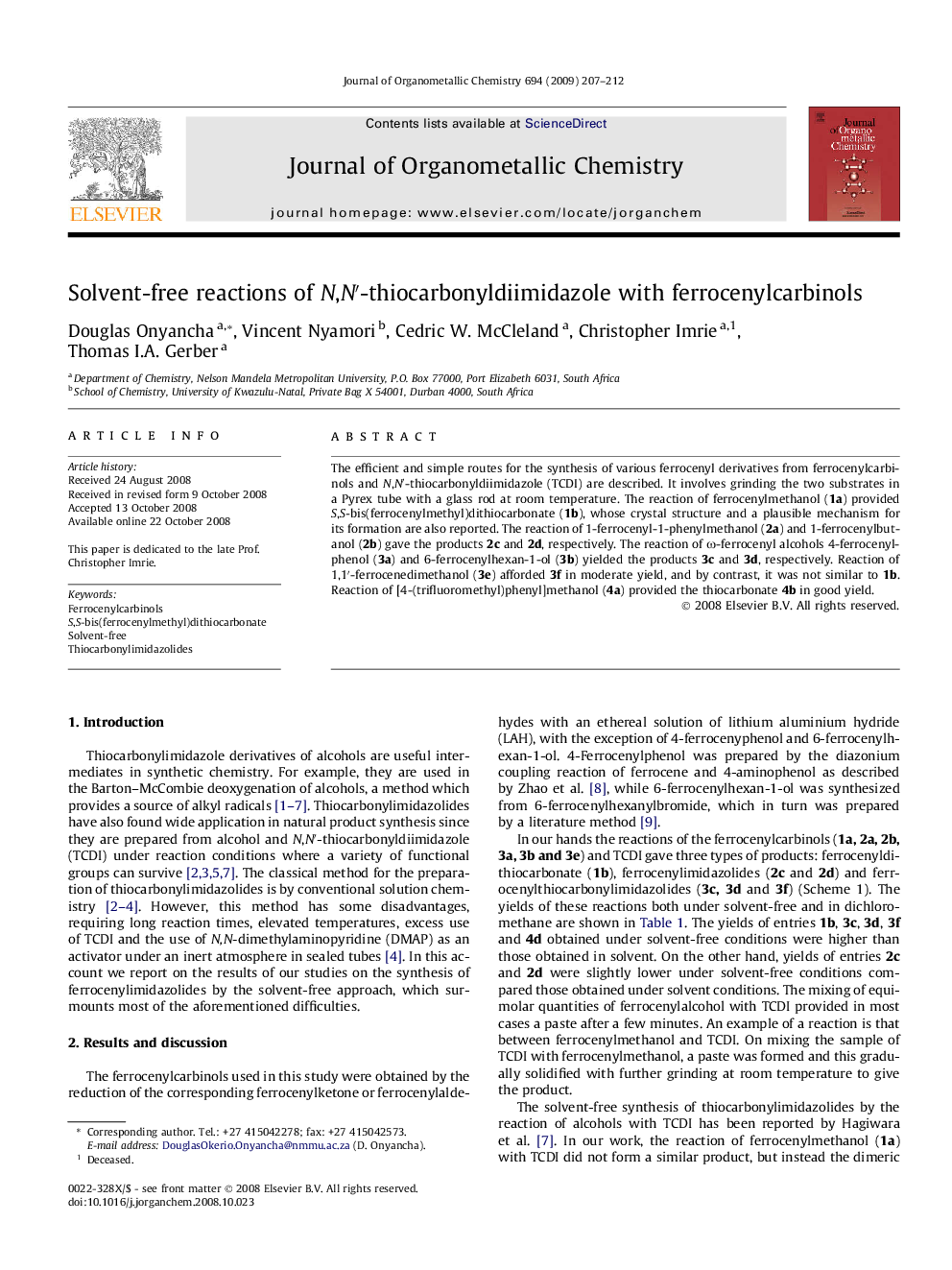| Article ID | Journal | Published Year | Pages | File Type |
|---|---|---|---|---|
| 1325414 | Journal of Organometallic Chemistry | 2009 | 6 Pages |
The efficient and simple routes for the synthesis of various ferrocenyl derivatives from ferrocenylcarbinols and N,N′-thiocarbonyldiimidazole (TCDI) are described. It involves grinding the two substrates in a Pyrex tube with a glass rod at room temperature. The reaction of ferrocenylmethanol (1a) provided S,S-bis(ferrocenylmethyl)dithiocarbonate (1b), whose crystal structure and a plausible mechanism for its formation are also reported. The reaction of 1-ferrocenyl-1-phenylmethanol (2a) and 1-ferrocenylbutanol (2b) gave the products 2c and 2d, respectively. The reaction of ω-ferrocenyl alcohols 4-ferrocenylphenol (3a) and 6-ferrocenylhexan-1-ol (3b) yielded the products 3c and 3d, respectively. Reaction of 1,1′-ferrocenedimethanol (3e) afforded 3f in moderate yield, and by contrast, it was not similar to 1b. Reaction of [4-(trifluoromethyl)phenyl]methanol (4a) provided the thiocarbonate 4b in good yield.
Graphical abstractThe reactions of ferrocenylcarbinols with N,N′-thiocarbonyldiimidazole under both solvent-free conditions and in dichloromethane are described. The reaction of ferrocenylmethanol afforded S,S-bis(ferrocenylmethyl)dithiocarbonate, reaction of α-substituted ferrocenylcarbinols provided ferrocenylalkylimidazolides while ω-ferrocenylcarbinols yielded ferrocenylimidazolecarbothioates.Figure optionsDownload full-size imageDownload as PowerPoint slide
